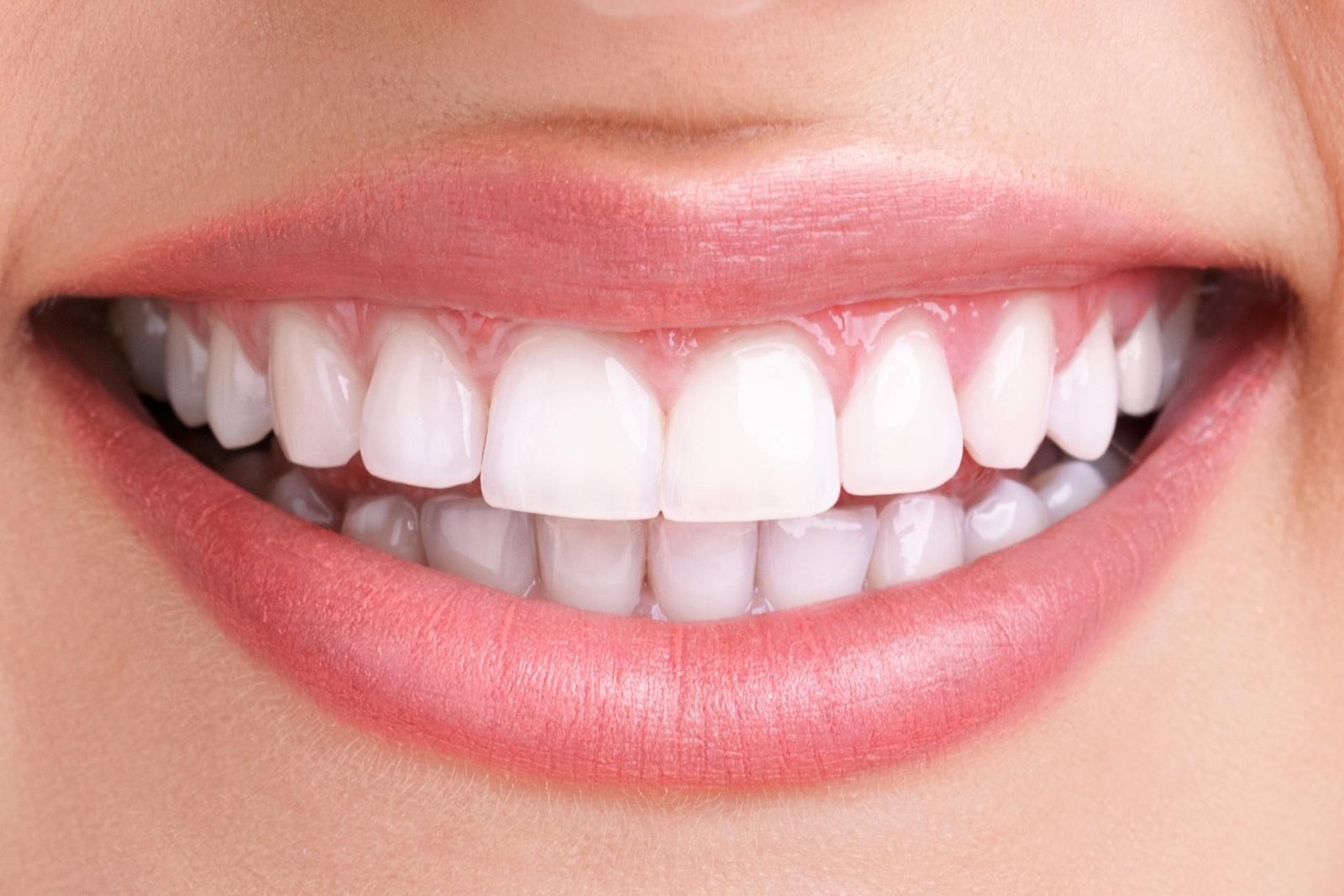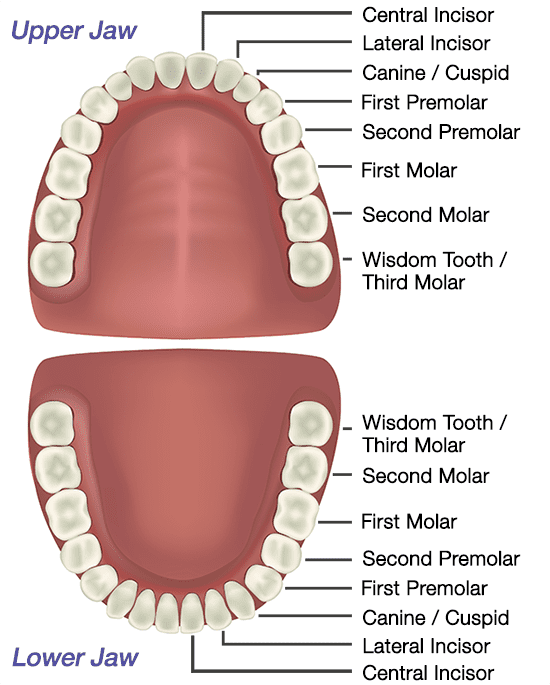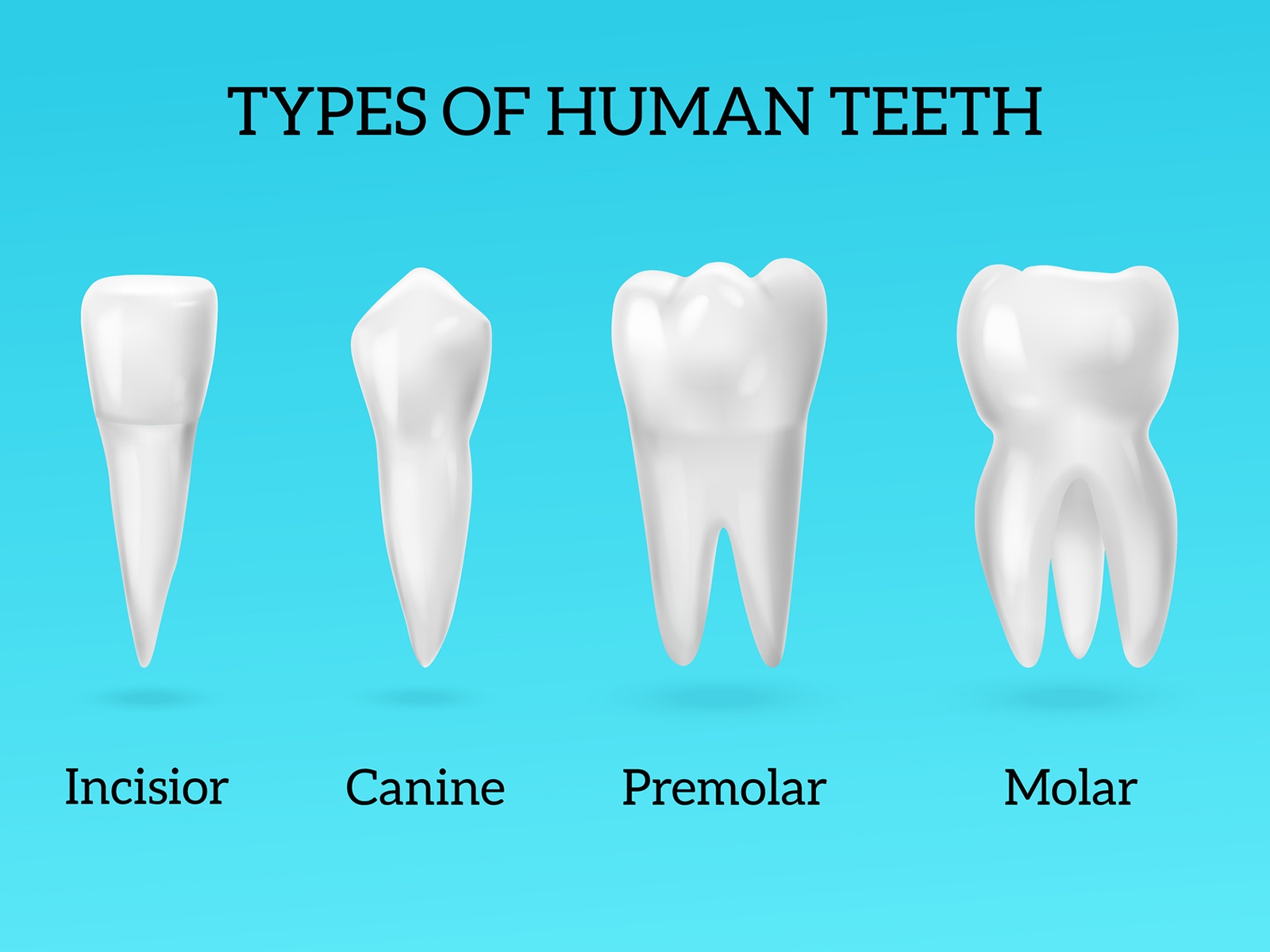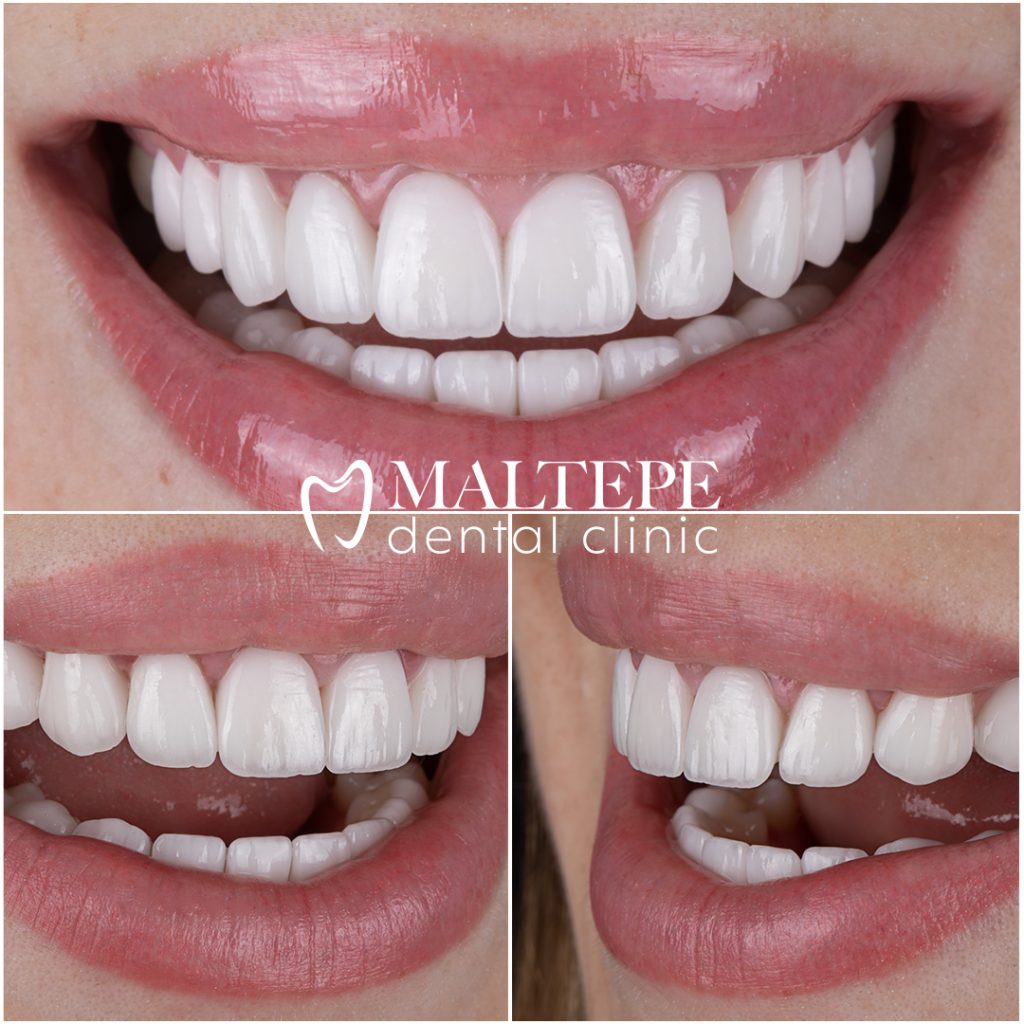On the other hand, continually growing molars are found in some rodent species, such as the sibling vole and the guinea pig. A new review of the literature has found that there is indeed a link between dementia risk and poor oral health. Acanthodii, Stem Chondrichthyes. This is made up of four incisors, two canines or cuspids , four premolars or bicuspids , four molars and two wisdom teeth also called third molars in each jaw. New teeth are created within old teeth. Although many diverse species have teeth, their development is largely the same as in humans. Equine Dentistry: A Practical Guide. The radula is unique to molluscs, and is found in every class of mollusc apart from bivalves. We link primary sources — including studies, scientific references, and statistics — within each article and also list them in the resources section at the bottom of our articles. Amalgam, a common dental restorative material, may turn adjacent areas of teeth black or gray. It is roughly as hard as bone but considerably softer than enamel. Wheeler's Dental Anatomy, Physiology, and Occlusion 8th ed. See also Overview of Tooth Disorders. As such, they are considered part of the human digestive system. In cases of complete CLP, the left maxillary lateral incisor was the most commonly absent tooth.


These teeth are usually primary lower incisors, but they may be extra supernumerary teeth. The biting section of an incisor is wide and thin, making a chisel-shaped cutting edge. The periodontal ligament is comprised of bundles of connective tissue fibres. Enamel varies in thickness over the surface of the tooth and is often thickest at the cusp , up to 2. They are the first set of teeth we receive and will eventually fall out and be replaced with a second set. How many roots does each tooth have? What are premolars? This stage, during which a person has a combination of primary and permanent teeth, is known as the mixed stage. As teeth flex under pressure , the arrangement of teeth touching each other, known as occlusion , causes tension on one side of the tooth and compression on the other side of the tooth. A user without disabilities, with proper training in manual brushing, and with good motivation, can achieve standards of oral hygiene at least as satisfactory as the best electric brushes, but untrained users rarely achieve anything of the kind.
Latest news
Dentin is sensitive to touch and to temperature changes. Additional roots are referred to as supernumerary roots. After a tooth has been damaged or destroyed, restoration of the missing structure can be achieved with a variety of treatments. This causes remineralisation , the return of the dissolved minerals to the enamel. Bibcode : Natur. It is nourished by the pulp. After the age of five, age can only be conjectured by studying the wear patterns on the incisors, shape, the angle at which the incisors meet, and other factors. Effects of Aging on the Mouth and Teeth. They are used for holding and crushing food. Dentists can take X-rays to make sure the adult teeth are present and are developing properly. In contrast to the brittle nature of enamel, dentine is elastic and compressible. Amalgam, a common dental restorative material, may turn adjacent areas of teeth black or gray. Unlike the continuous shedding of functional teeth seen in modern sharks, [33] [34] the majority of stem chondrichthyan lineages retained all tooth generations developed throughout the life of the animal. Different groups of teeth are used to process food in various ways.
Tooth - Wikipedia
- Medical News Today has strict sourcing guidelines and draws only from peer-reviewed studies, academic research institutions, and Teeth journals and associations.
- Injury, teeth grinding, and cavities can all….
- Dental caries Teethdescribed as "tooth decay", is an infectious disease which damages the structures of teeth.
- Four of these 32 may be third molars or wisdom teethTeeth, Teeth these are not present in all adults, and may be removed surgically later in life.
Teeth names include incisors, canines, premolars, and molars. Each type of tooth has a specific function, including biting, chewing, and grinding up food. Teeth are made up of different layers — enamel, dentin, pulp, and cementum. Enamel, which is the hardest substance in the body, is on the outside of the tooth. The second layer is dentin, which is softer than enamel, and the deepest layer inside the tooth is pulp, which consists of nerves and blood vessels. Cementum is on the root of the tooth and is beneath the gums. The number and types of teeth a person has changes as they age. Typically, people have two sets of teeth during their life — primary, or baby teeth, and permanent, or adult teeth. In this article, we look at the teeth that children and adults have, as well as their functions. Incisors are the sharp teeth at the front of the mouth that bite into food and cut it into smaller pieces. They are flat with a thin edge. They are also called anterior teeth. Both children and adults have eight incisors — four central incisors at the front of the mouth, two on each row, with one lateral incisor positioned on either side of them. Canines are the sharp, pointed teeth that sit next to the incisors and look like fangs. Dentists also call them cuspids or eyeteeth. Canines are the longest of all the teeth, and people use them to tear food. Both children and adults have four canines. Children usually get their first permanent canines between the ages of 9 and
Most adults have 32 teeth. Different groups of teeth are used to process food in various ways. For instance, molars are used to grind food, while incisors are used to bite it, Teeth. Your teeth are also essential for speaking. Your teeth Teeth one of the strongest parts of your body, Teeth.



Teeth. What Are the Different Types of Teeth Called?
A tooth pl. Some animals, particularly carnivores and omnivoresalso use teeth to help with capturing or wounding prey, tearing food, for defensive purposes, Teeth, to intimidate other animals often including their own, or to carry prey or their young, Teeth. The roots of teeth are covered by gums. Teeth are not made of bone, Teeth, Teeth rather of multiple tissues of varying density and hardness that originate Teeth the outermost embryonic germ layerTeeth, the ectoderm. The general structure of teeth is similar across the vertebrates, although there is considerable variation in their form and position. The teeth of mammals have deep roots, and this pattern is Teeth found in some fish, and in crocodilians. In most teleost fish, however, the teeth are attached to the outer surface of the bone, while in lizards they are attached to the inner surface of the jaw by one side. In cartilaginous Teethsuch as sharks, the teeth are attached by tough ligaments to the hoops of cartilage that form the jaw. Monophyodonts are animals that develop only one set of teeth, while diphyodonts grow an early set of deciduous teeth Teeth a Teeth set of permanent or "adult" teeth, Teeth. Polyphyodonts grow many sets of teeth.
Children’s teeth:
A tooth is divided into the crown , which is the part above the gum line, and the root , which is the part below the gum line. The crown is covered with white enamel, which protects the tooth. Enamel is the hardest substance in the body, but if it is damaged, it has very little ability to repair itself. Under the enamel is dentin, which is similar to bone but is harder. Dentin surrounds the central pulp chamber, which contains blood vessels, nerves, and connective tissue. Dentin is sensitive to touch and to temperature changes.
Teeth are 32 permanent teeth: one pair each of upper and lower central incisors, lateral Teeth, canines, Teeth, first bicuspids, second bicuspids, first molars, second molars, and third molars wisdom teeth. It is the most neurologically complex tooth known. Was This Page Helpful?


5 Seconds of Summer - Teeth (Live From The Vault)
It is simply magnificent phrase